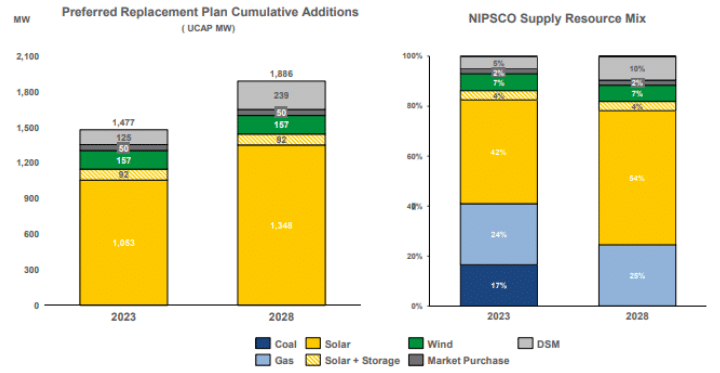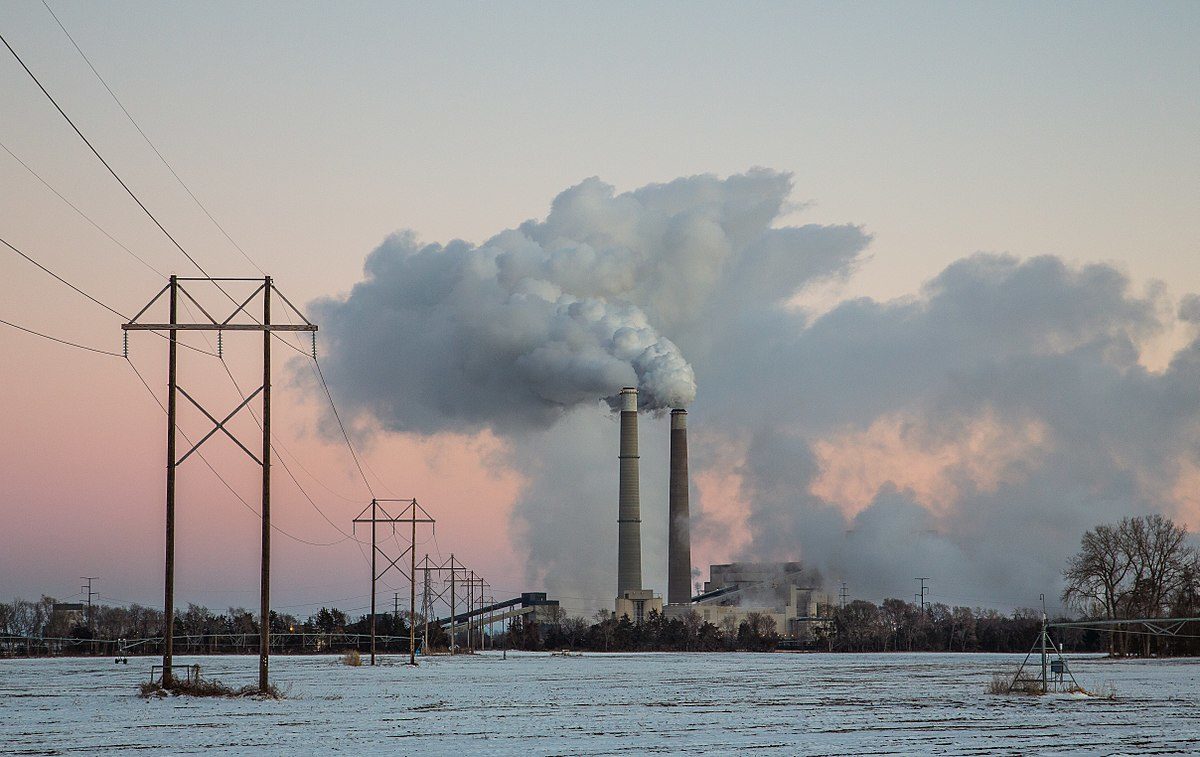On February 27th, the Indiana Senate Utilities Committee will hear House Bill 1414, a measure which looks to ramp up the necessary steps for a utility to retire a legacy generation resource.
The bill defines a legacy generation resource as an electric generating facility in the state with a capacity of 80 MW or more. It is founded upon twin pillars that make it especially difficult to retire any such resource, stating:
“Utilities may not terminate a power contacts with any such unit unless the public utility provides the public utilities commission with at least three years advance notice of the termination…utilities shall provide the commission with at least six months advance notice of the public utility’s intention to retire, sell, or transfer a reliable capacity resource if such intention is not set forth in the public utility’s preferred portfolio in the public utility’s most recent integrated resource plan…”
The above policies do not directly prioritize coal over any other generation source. Furthermore, while three years advance notice for any suddenly-realized retirement aspirations seems excessive, that’s exactly why integrated resource plans exist.
The neutral tone of this bill changes in its final policies, putting forth that any high-value workforce ready credit-bearing grants under IC 21-12-8 (an adult student grant fund you can read about here) must give priority to any eligible applicant who is a dislocated coal mine employee. Dislocated in this sense means laid off or terminated from employment at a commercial coal mine in Indiana, as a result of the permanent closure of, or a substantial layoff at said mine.
And yet, at the same time that the state’s legislators consider protections for the coal industry, Northern Indiana Public Service Company (NIPSCO), the second largest electric utility in Indiana, released results from its recent RFPs, which we’ll let Senior Energy Policy Analyst at EQ Research, Ben Inskeep take it from here.
NEW: Results from NIPSCO's recent RFPs in Indiana, which includes the largest solar solicitation that I have ever seen (2,300 MW by 2023). 👀
Solar + Storage: $1.12/watt
Solar PPA: $39.30/MWh
Solar + Storage PPA: $43.30/MWh(These are *average*, not winning, bid prices.) pic.twitter.com/ARwMsnYnKK
— Ben Inskeep (@Ben_Inskeep) February 18, 2020
Not only do those 2,3o0 MW represent more solar than all but eight states in the country, they also represent more than six times the amount of solar that has been installed in the state thus far (377 MW). For additional perspective, NIPSCO serves approximately 476,000 electric customers and SEIA estimates that 2,300 MW is enough capacity to meet the total electricity need of more than 400,000 customers.
This type of commitment to renewables in Indiana, while unprecedented, is something that NIPSCO has been taking steps toward for some time. In fall 2018, the company announced plans to close all of its coal facilities by 2028, replacing them with solar, solar-plus-wind, wind, demand-side response and the spot market, which would explain the massive RFP.
tWhat’s more is that none of these retirements will be subject to the regulation above. Even if HB 1414 passes, they have been outlined for roughly 17 months now.
The exceedingly low cost of solar-plus-storage at $1.12/W also leans towards proving the utility’s claim that some of the coal facilities could have stayed open past 2035, but would have cost customers billions of dollars more than shifting to new solar power, $4.3 billion, to be exact.

Edit 2/25/20: This article was edited to correct the amount of customers served by NIPSCO. We apologize for the error.
This content is protected by copyright and may not be reused. If you want to cooperate with us and would like to reuse some of our content, please contact: editors@pv-magazine.com.








Wondering if NIPSCO will find that solar is so cheap they will end up closing that last coal plant. Hoping so.
And, yeah, the Republican legislature is trying to pick winners – what a shocker. Same with the Wyoming legislature.
““Utilities may not terminate a power contacts with any such unit unless the public utility provides the public utilities commission with at least three years advance notice of the termination…utilities shall provide the commission with at least six months advance notice of the public utility’s intention to retire, sell, or transfer a reliable capacity resource if such intention is not set forth in the public utility’s preferred portfolio in the public utility’s most recent integrated resource plan…””
Is this part of a ‘new’ wrinkle in the “regulated monopoly” often known as the ‘power company’?
“The exceedingly low cost of solar-plus-storage at $1.12/W also leans towards proving the utility’s claim that some of the coal facilities could have stayed open past 2035, but would have cost customers billions of dollars more than shifting to new solar power, $4.3 billion, to be exact.”
Somewhere, there will be a break over point in this ‘fight’ of going from fueled generation to non-fueled generation. Just 10 years ago, solar PV and wind generation grid tied was selling from a low of about $50/kWh to $60/kWh, then it started to decrease on almost every new utility scale contract that was put out to bid. Now the analysis points at $43.30/MWh with a solar plus storage system in place. In the future, it will become commonplace to combine energy storage with solar PV and wind generation projects. Just the ability to extend the solar PV or wind generation day with energy storage creates value within the system for energy generation time shifting, being able to “shuttle” over generation from solar PV or wind to other parts of the country without having to use a fueled generation plant for spinning reserve or spinning demand.
Not sure where you got the number of customers from, probably total gas and Electric but from the Nipsco about us page…
Serving more than 468,000 electric customers across the northern third of Indiana, Northern Indiana Public Service Company (NIPSCO) is the second largest electric distribution company in the state. Serving more than 30 counties.
That’s the change in the ‘narrative’ from residential and business electricity to total ‘decarbonization’. Now we have another ‘conversation’ about replacing all natural gas appliances in homes and businesses with all electric appliances. This ‘progression’ towards decarbonization is pushing mandates in places like California from the old million solar roofs initiative towards the decarbonization and attendant upgrades to homes from old 100 Amp house panels to 200 Amp house panels. IF you are going to go this way, (all electric), then solar PV and smart ESS would mesh well with the new crop of (smart house circuit breaker panels). Well known companies like Eaton, Siemens, Leviton, Square D have individual smart circuit breakers and new companies like Span, Atom Power and others are digital C.B. technology based. With a smart ESS one could isolate specific house circuits and actually run some of the home (off grid) when grid power is interrupted. So, you could keep some receptacles in the house powered, like the refrigerator/freezer, ceiling fans, lights, microwave, the garage door opener. IF you take charge of the “power budget” you might be able to shed some electric circuits in the house to power circuits like a hot water heater for an hour to get a hot shower or bath, then go back to critical loads.